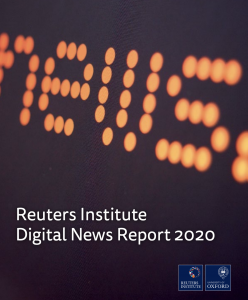Following the 2016 US presidential election, many have expressed concern about the effects of false stories (“fake news”), circulated largely through social media. Research from Oxford University’s Reuters Institute for the Study of Journalism has found a long and steady decline in trust in traditional media. (See Reuters Institute Digital News Report 2020). This declining trust coincides with the uprise of social media as a main source of information. In 2020, social media was a source of news for 48 percent of the public, up from 27 percent in 2013, according to the Reuters Institute.
Tag Archives: fake news
Case Study: Text Analytics against Fake News

Everybody has heard about fake news. Fake news is a neologism that can be formally defined as a type of yellow journalism or propaganda that consists of deliberate disinformation or hoaxes spread via traditional print and broadcast news media or online social media. It is also commonly used to refer to fabricated or junk news, with no basis in fact, but presented as being factually accurate.
The reason for putting someone’s efforts in creating fake news is mainly to cause financial, political or reputational damage to people, companies or organizations, using sensationalist, dishonest, or outright fabricated headlines to increase readership and dissemination among readers using viralization. In addition, clickbait stories, a special type of fake news, earn direct advertising revenue from this activity.


